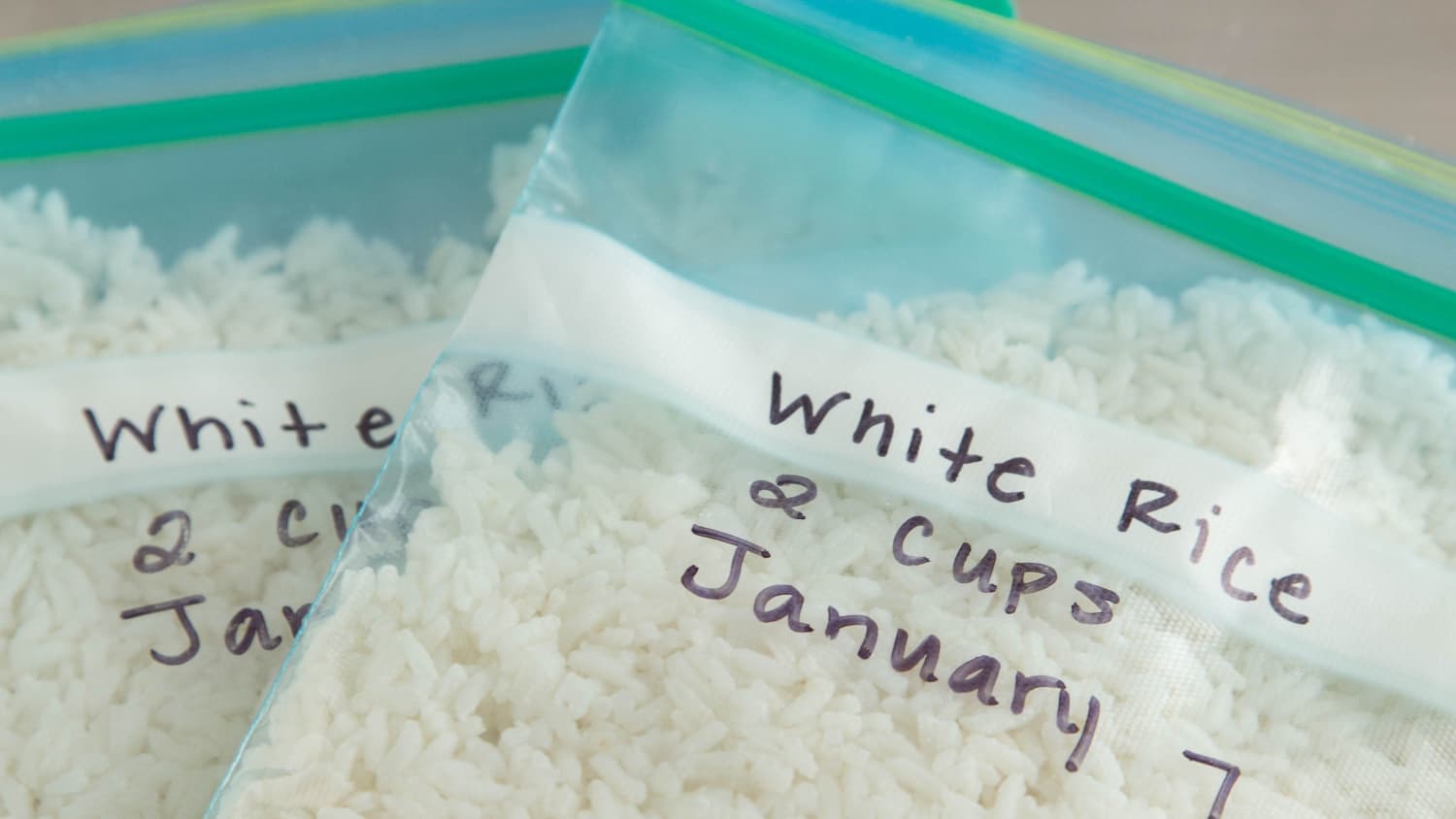How To Make-Ahead and Freeze Any Grain
4.5
(2)
Your folders
Your folders
Author : Emma Christensen

Ingredients
Export 2 ingredients for grocery delivery
Instructions
Step 1
Cook the grains: Cook your grain as usual, using the same amount of liquid as usual and cooking until the grains are tender. If you still have liquid in the pan after cooking, drain the liquid.
Step 2
Cool the grains: Run a baking sheet under cool water. Pour off the water, but do not dry — this will help keep the grains from sticking as they dry. Spread the grains in an even layer over the baking sheet and cool for about 10 minutes, until they've cooled to room temperature. (Be sure to refrigerate or freeze the grains as soon as they are cool to avoid any food safety risks.)
Step 3
Portion the grains into freezer bags: Use a measuring cup to portion the grains into your freezer bags or containers. Portion the grains according to how much you typically use for your recipes; if you're not sure how you will use the grains, freeze them in 1-cup or 2-cup portions. This will give you versatility in how you use them.
Step 4
Press out as much air as possible and seal: The more air you can squeeze out, the longer your grains will keep without developing freezer burn. If you have a vacuum sealer, now is the time to use it.
Step 5
Label the bags: Label each bag with the type of grain, the portion amount, and the date.
Step 6
Freeze the grains for up to 3 months: Stack the bags on top of each other and freeze flat. Frozen grains will generally keep for about 3 months before starting to develop freezer burn; grains will keep longer if vacuum-sealed.
Step 7
Use the frozen grains: Grains do not need to be thawed before using; thawing can give some grains a gummy texture. There are three ways you can use or warm the frozen grains:
Step 8
Add grains directly to soups and skillet dishes: Increase the cooking time by a few minutes to allow the grains to reheat.
Step 9
Warm grains in the microwave: Transfer the grains to a microwave-safe bowl or other container and sprinkle a tablespoon or two of water over top. Cover loosely. Warm in 1-minute increments, stirring in between, until the grains are hot.
Step 10
Warm grains on the stovetop: Transfer the grains to a small saucepan and sprinkle a tablespoon or two of water over the top. Stir frequently as the grains warm and add another tablespoon or two of water as needed to keep grains from sticking or burning on the bottom.